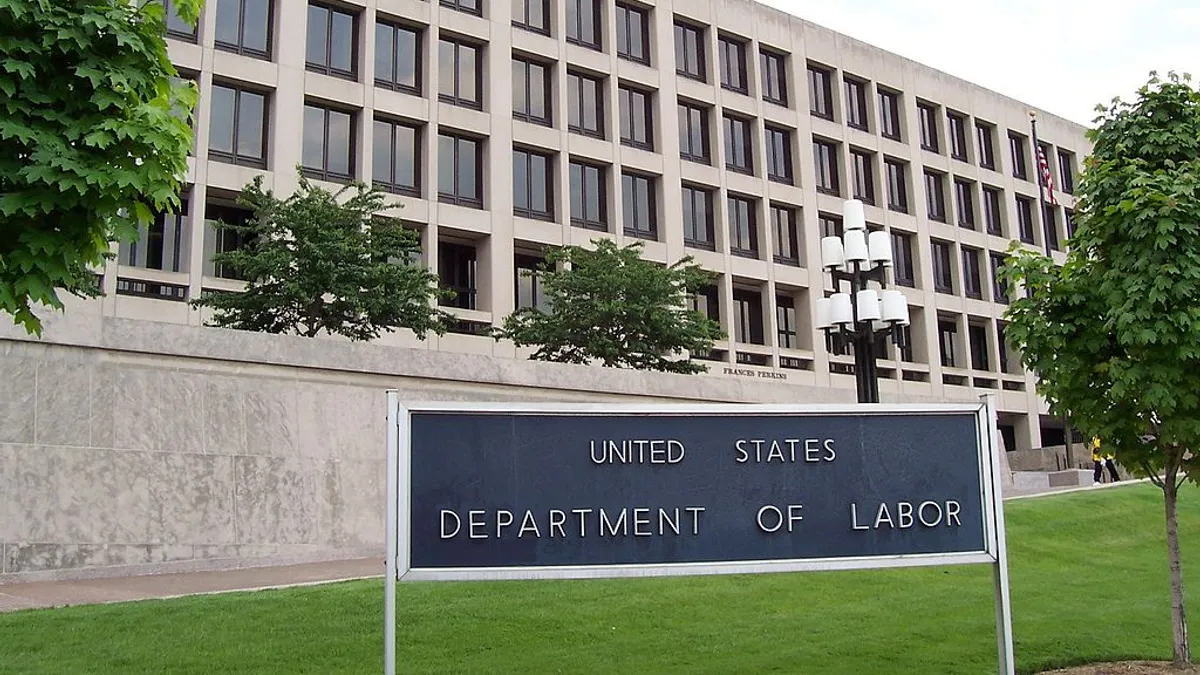Dive Brief:
- On-site workers are at increased risk for COVID-19 because the Occupational Safety and Health Administration is not providing the level of oversight needed to keep them safe, according to a recently issued report from the U.S. Department of Labor's inspector general.
- The IG found that, compared to 2019, OSHA received 15% more complaints overall but conducted 50% fewer inspections, primarily to reduce the level of person-to-person contact during the pandemic. When compared to state-level response, the federal safety agency issued 295 violation citations related to 176 COVID-19-related complaints while states issued 1,679 violation citations related to 756 similar complaints. Construction was one of the industries with the highest number of COVID-19 safety complaints at 297.
- The IG said that OSHA's physical presence on jobsites typically results in accelerated mitigation of at least some hazards identified by inspectors. But most inspections during the pandemic have been conducted remotely, leaving workers vulnerable to unabated hazards for a longer period of time. The watchdog said OSHA agrees with its recommendations regarding on-site and remote inspection strategies and an emergency temporary standard for infectious diseases.
Dive Insight:
Specifically, the IG recommended that:
- OSHA prioritize very high and high-risk employers for COVID-19-related on-site inspections, particularly as businesses reopen and increase operations.
- Track remote inspections retroactively to Feb. 1, 2020, and continue tracking them.
- Compare remote inspections to on-site inspections in regard to the frequency and timeliness of inspectors identifying and ensuring abatement of worksite hazards.
- Analyze and determine whether establishing an infectious disease-specific emergency temporary standard is necessary to help control the spread of COVID-19 on worksites.
The IG included OSHA’s written response to its recommendations; the agency said it accepts the recommendations and is working on all of them.
During former President Donald Trump's administration, OSHA pushed back against suggestions — and even legal action — that it develop an emergency temporary standard for COVID-19, arguing that public health guidance was continually evolving. The AFL-CIO took the agency to court to try and force it to develop a standard, but the union's legal challenge failed.
On his first full day in office, President Joe Biden ordered OSHA to reconsider whether an emergency temporary standard for COVID-19 is necessary, and if so, to issue one by March 15.
Attorney Phillip Russell with Ogletree, Deakins, Nash, Smoak & Stewart doesn't discount the possibility that the IG's report is also a political shot.
"This is the present-day DOL telling the DOL in a former administration it should have done more," he said.
In fact, Virginia Democrat Rep. Bobby Scott, chairman of the U.S. House Education and Labor Committee, this week issued a press release stating that he had been asking the Labor Department to issue an emergency temporary standard for a year and that the IG's report "reveals the consequences of the Trump administration’s inaction."
For employers, Russell said, the turn toward an increased on-site OSHA presence could mean a few things — less negotiating, more citations and more litigation.














